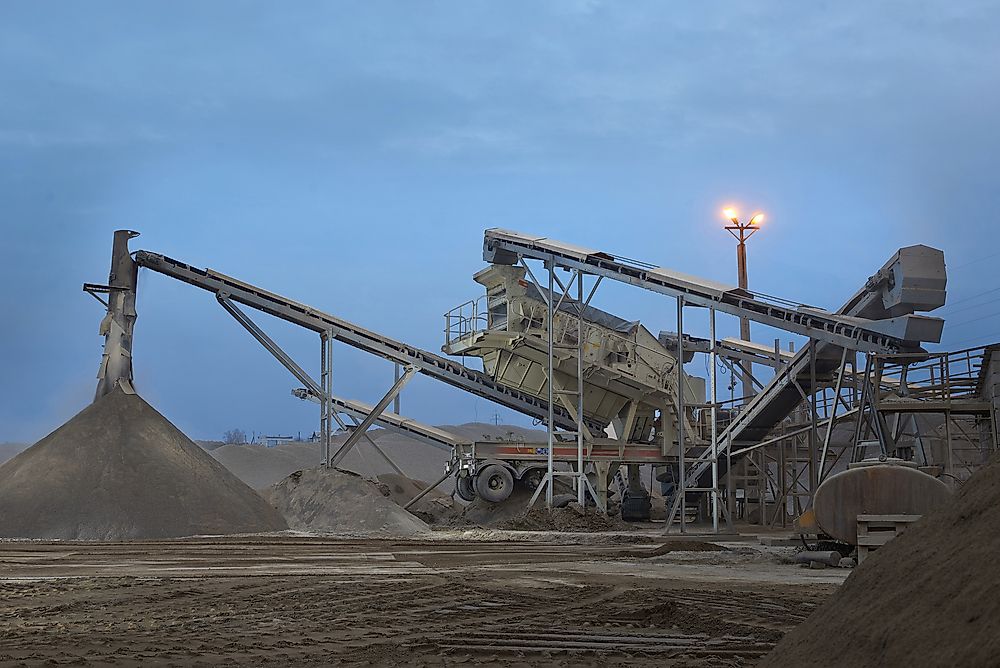What Are The Major Natural Resources Of Zambia?

Zambia is a landlocked country situated in south-central Africa and is bordered by Tanzania, the Democratic Republic of the Congo (DRC), Malawi, Botswana, Zimbabwe, Mozambique, Namibia, and Angola. The country experienced a period of economic decline during the 1980s and 1990s following a persistent drought, declining copper prices, and problems of mismanagement and corruption. However, the country’s economy has greatly improved in recent years and has recorded a GDP growth rate greater than 6% annually between 2005 and 2011. In 2010, Zambia was named one of the world's fastest economically reformed countries by the World Bank. The nation's capital also serves as the headquarters of the Common Market for Eastern and Southern Africa (COMESA).
Overview of Resources in Zambia
Zambia has a wide range of natural resources including copper, cobalt, silver, uranium, lead, coal, zinc, gold, and emerald. In fact, it is one of the main producers of semi-precious gemstones and cobalt. The country is also recognized internationally as a major producer of tourmaline, amethyst, and aquamarine. Zambia is the fourth largest copper producer in the world, and holds about 6% of global copper reserves. It also has abundant wildlife, lakes, and rivers. The mining industry has been the country’s main economic backbone, especially the mining and refining of copper. Since the early 20th century, a number of metalliferous and non-metalliferous resoueces have been discovered, which have expanded mining and exploration efforts within the country. Some of the major natural resources of Zambia are highlighted below.
Copper
Zambia’s economy has historically been heavily based on copper mining. The discovery of copper in Zambia is credited to American scout Frederick Russell Burnham, who worked for Cecil John Rhodes, the British politician, mining tycoon, and strong supporter of British imperialism. Zambia holds at least 6% of the world’s copper deposits, and is the second largest copper producer in Africa, after the DRC, and the seventh largest producer in the world. Zambia produces approximately 900,000 tons of copper per year, and is expected to increase production as a result of ongoing infrastructural development. Copper is the country’s major export, which accounts for more than 60% of Zambia's total exports and generates about 45% of government revenues. Additionally, Zambia accounts for about 70% of Africa's total copper exports. The largest underground copper mine in Zambia is the Mufulira mine, which is also the largest copper mine in Africa. The mine is jointly owned by the Zambian government and Roan Consolidated Mines (RCM).
Zambia’s copper industry is highly privatized, and has been heavily invested in by China. In 2007, China and Zambia created an economic partnership zone around the Chambishi Copper Mine. However, Konkola Copper Mines (KCM) is the largest copper producing company in Zambia. Copper mining companies are the biggest employers in Zambia, employing about 60,000 people in 2012, and creating close to 220,000 indirect jobs. While economically successful, copper mining companies have also been accused of poor waste disposal and the pollution of nearby communities and water supplies.
Wildlife
Zambia has diverse flora and fauna, most of which is located within the country’s protected areas. Zambia has 20 national parks, which protect about 6.4% of the country's total area. Each park is also surrounded by larger game management area (GMA), which serves as a buffer zone that helps in the regulation of hunting and timber harvesting. GMAs cover over 15% of the country, while forests cover about 7%. Together, approximately 22% of the country is protected. Zambia’s diverse wildlife makes it a popular destination within Africa, and as a result, tourism is one of the country’s largest employers and foreign exchange earners. Zambia is home to the "big five" game animals (lion, leopard, rhinoceros, elephant, and Cape buffalo), which live exclusively in the parks, except for the buffalo, which can sometimes be found beyond the parks. Other animals that live outside the parks include the spotted hyena, hippopotamus, and Nile crocodile. However, Zambia’s wildlife has deminished in the recent past due to several factors including expanding human habitats, land clearance for agriculture, and poor environmental management. In fact, 5 of the 20 national parks have lost significant wildlife due to poor management.
Water
Zambia's numerous perennial rivers provide the country with extensive surface water resources. For example, these rivers are sites of major dams that generate hydroelectric power and serve as a significant supply of household water. The country is drained by two major river basins: the Zambezi River basin, which covers almost 75% of the country; and the Congo River basin, which drains the remainder of the country. Numerous major rivers flow through Zambia, either partially or completely, such as the Kafue, Kabompo, Luangwa, Zambezi, and Lungwebungu. The Zambezi River flows through Zambia from its source at the country's southern border with Botswana, Namibia, and Zimbabwe. Much of Zambia's population rely on groundwater for domestic use, either directly or through a municipal water supply. Groundwater is primarily accessed through boreholes that draw water by electric pumps, solar pumps, buckets, or windmills.
Other Mineral Resources
Zambia has large deposits of limestone, which are located in the Lusaka region of the Central Province and in parts of the Eastern Province. The country also has significant coal resources and has been producing coal since 1967. For example, the Maamba Coal Mine, located near Lake Kariba, has substantial quantities of coal. Zambia also has a variety of silica sand and feldspars, which are found primarily in pegmatites. The country has a significant amount of gold and platinum, although they are mostly produced as a by-product of copper mining. Gold mining occurs on a small scale and the major gold producers in the country are Matala, Dunrobin, Jessie, and Sasara. Zambia produces about 700 tons of amethyst annually, and Kariba Minerals Limited is the chief producer. Emerald is primarily located in the Miku-Kafubu area.











